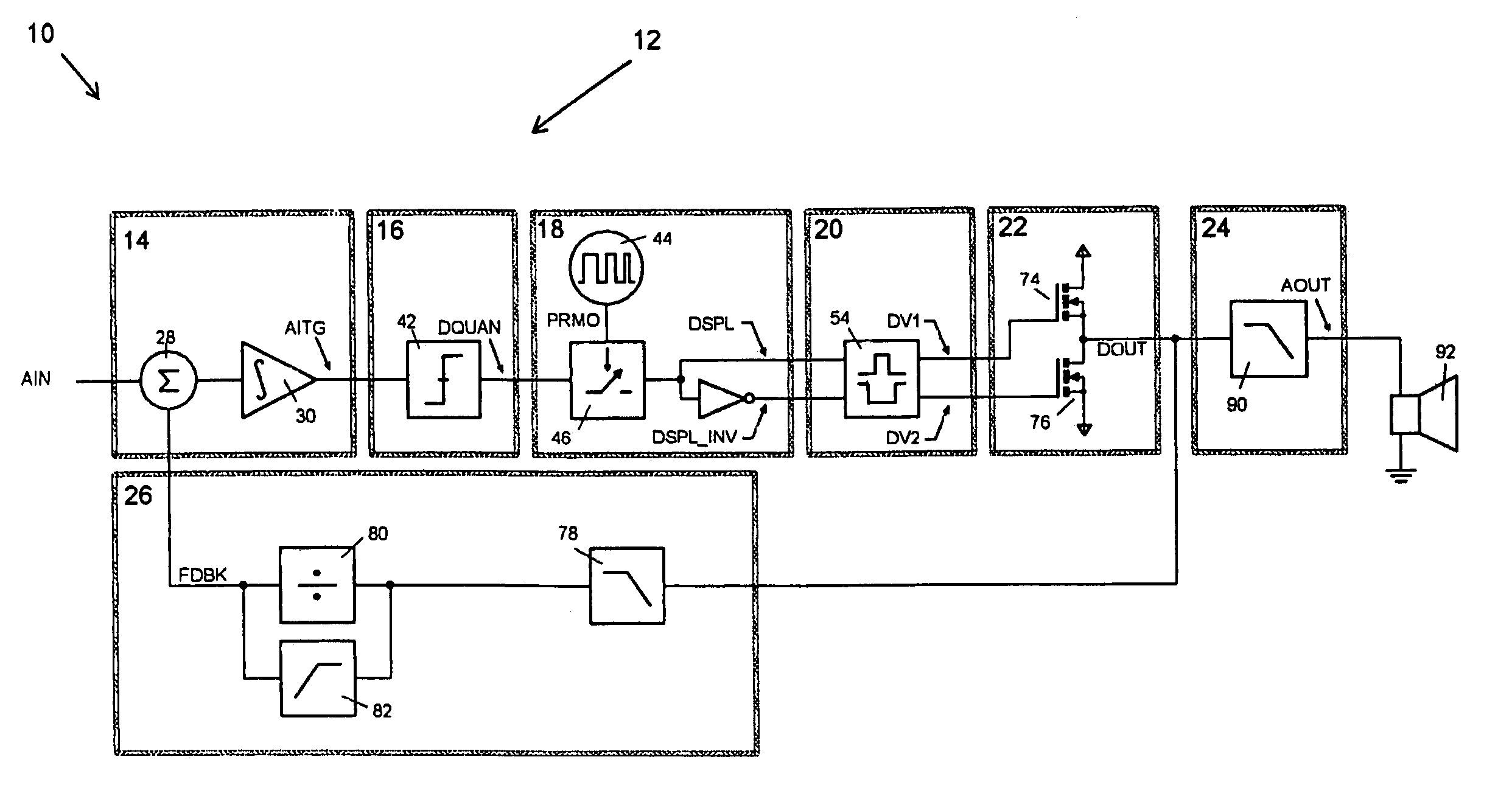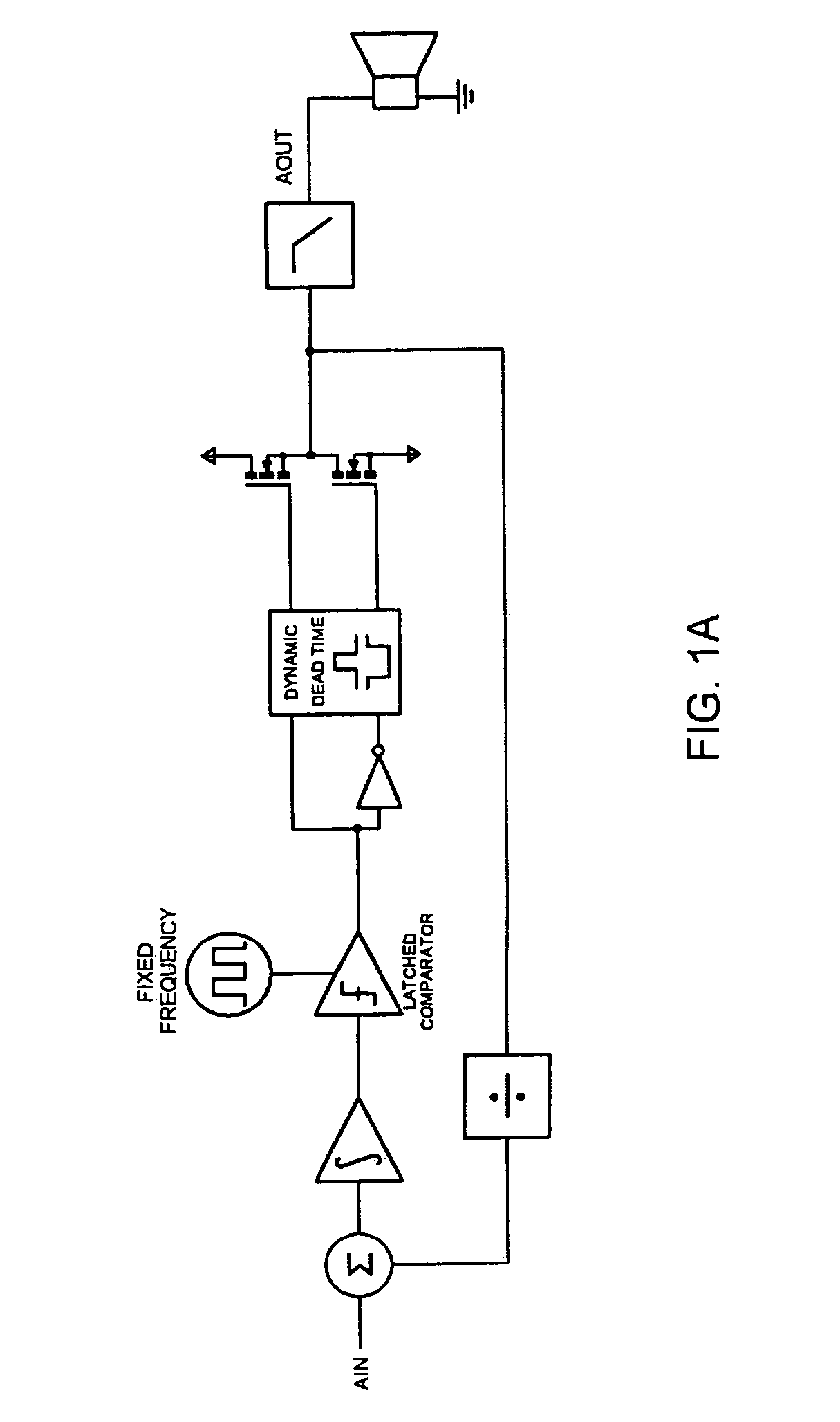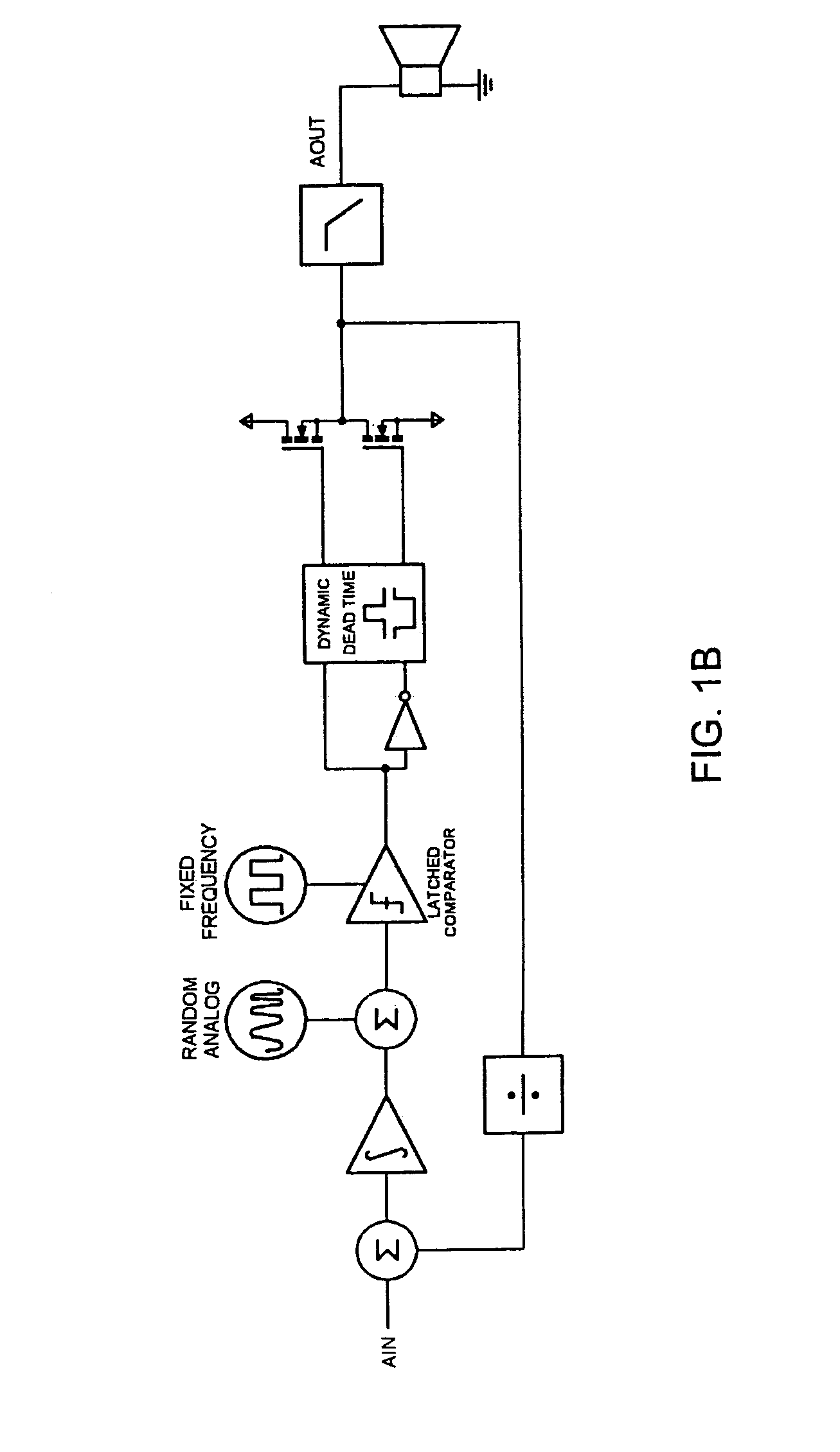Sigma-delta modulated amplifier
- Summary
- Abstract
- Description
- Claims
- Application Information
AI Technical Summary
Benefits of technology
Problems solved by technology
Method used
Image
Examples
Embodiment Construction
[0035]Reference will now be made in detail to various preferred embodiments of the present invention, examples of which are illustrated in the accompanying drawings. Wherever possible, the same reference numbers are used throughout the drawings to refer to the same or like parts.
[0036]Referring to FIG. 2, an amplifier 10 is shown constructed in accordance with various preferred embodiments of the present invention. Preferably, the amplifier 10 is an audio amplifier. However, in some embodiments the amplifier 10 may be a operational amplifier or other non-audio amplification element. The amplifier 10 is operable to provide reduced switching energy, reduced EMI, reduced output filtration, improved quantization and sampling, improved stability and spectral purity, simplified shoot-through prevention, and reduced cost through the use of a low-order discrete sigma-delta modulator 12 with continuous quantization, frequency randomized digital-on-digital sampling, loop compensation, and dis...
PUM
 Login to View More
Login to View More Abstract
Description
Claims
Application Information
 Login to View More
Login to View More - R&D
- Intellectual Property
- Life Sciences
- Materials
- Tech Scout
- Unparalleled Data Quality
- Higher Quality Content
- 60% Fewer Hallucinations
Browse by: Latest US Patents, China's latest patents, Technical Efficacy Thesaurus, Application Domain, Technology Topic, Popular Technical Reports.
© 2025 PatSnap. All rights reserved.Legal|Privacy policy|Modern Slavery Act Transparency Statement|Sitemap|About US| Contact US: help@patsnap.com



